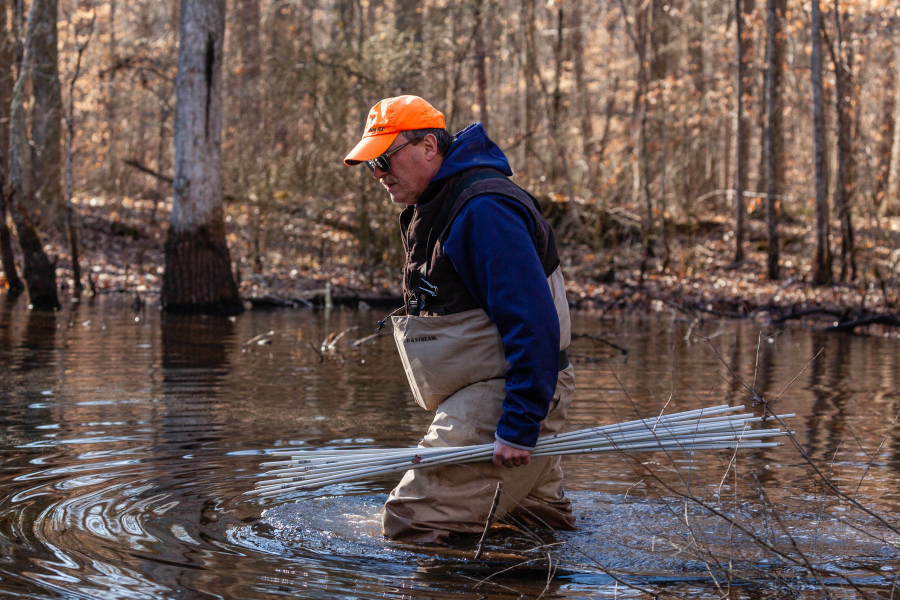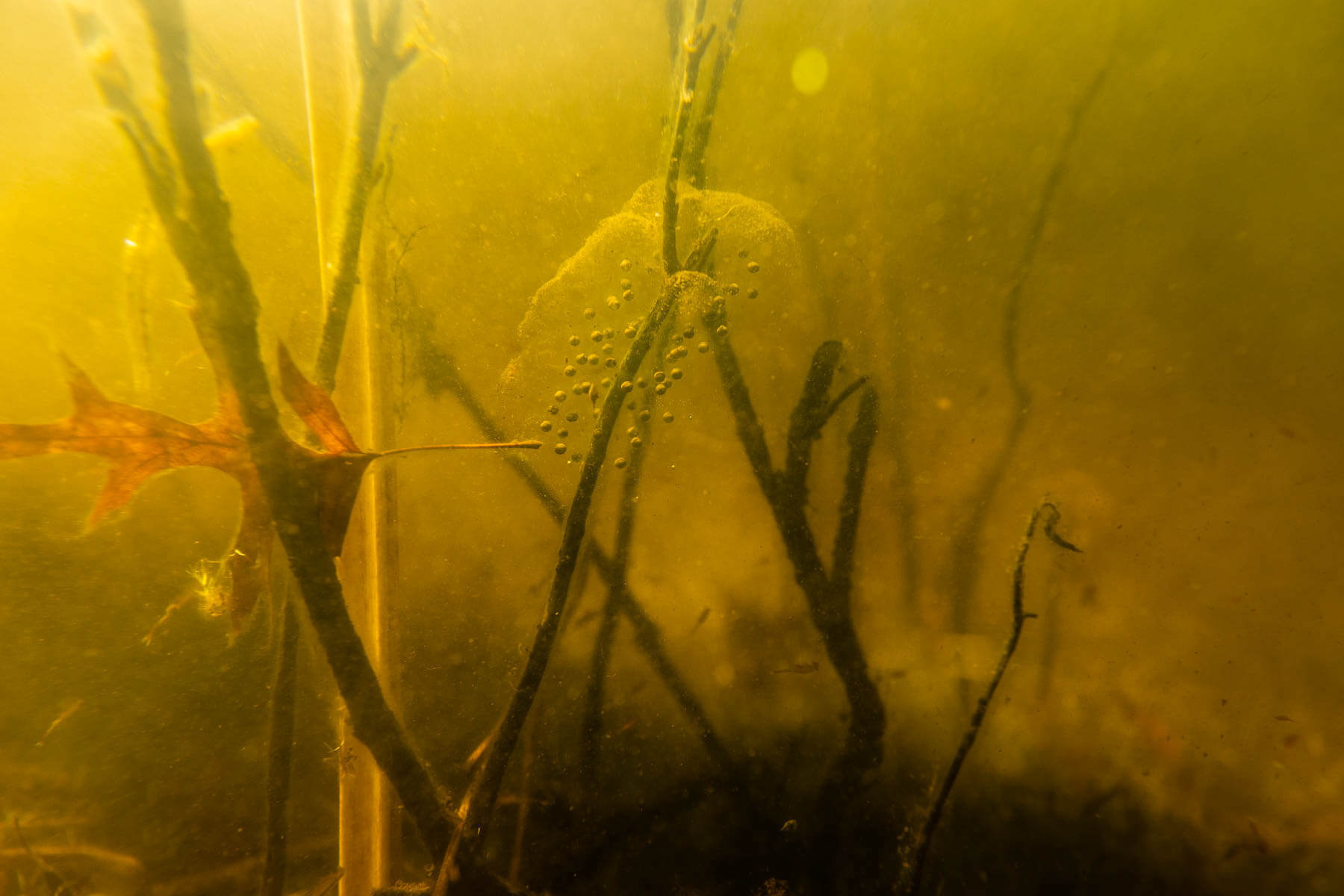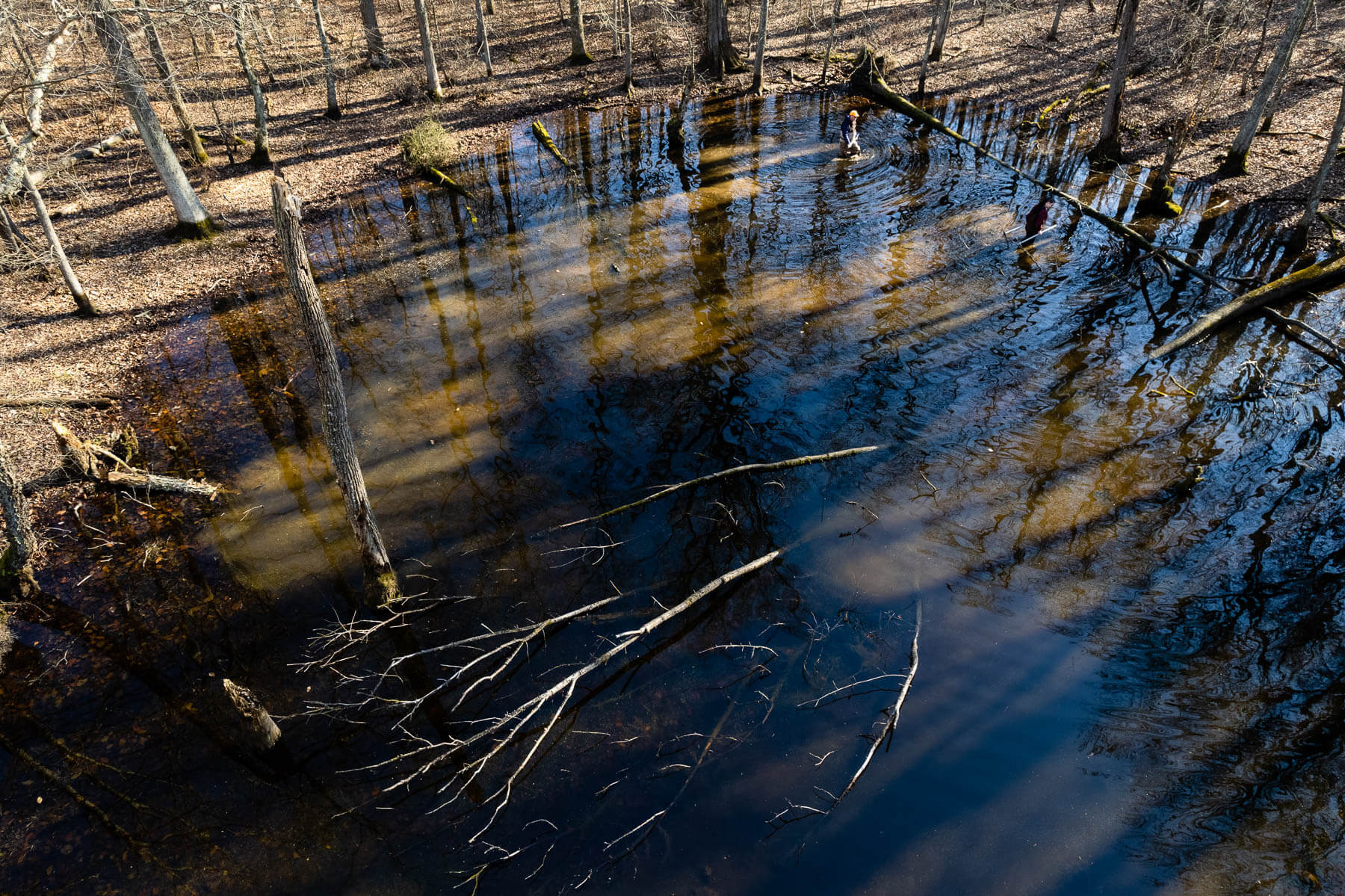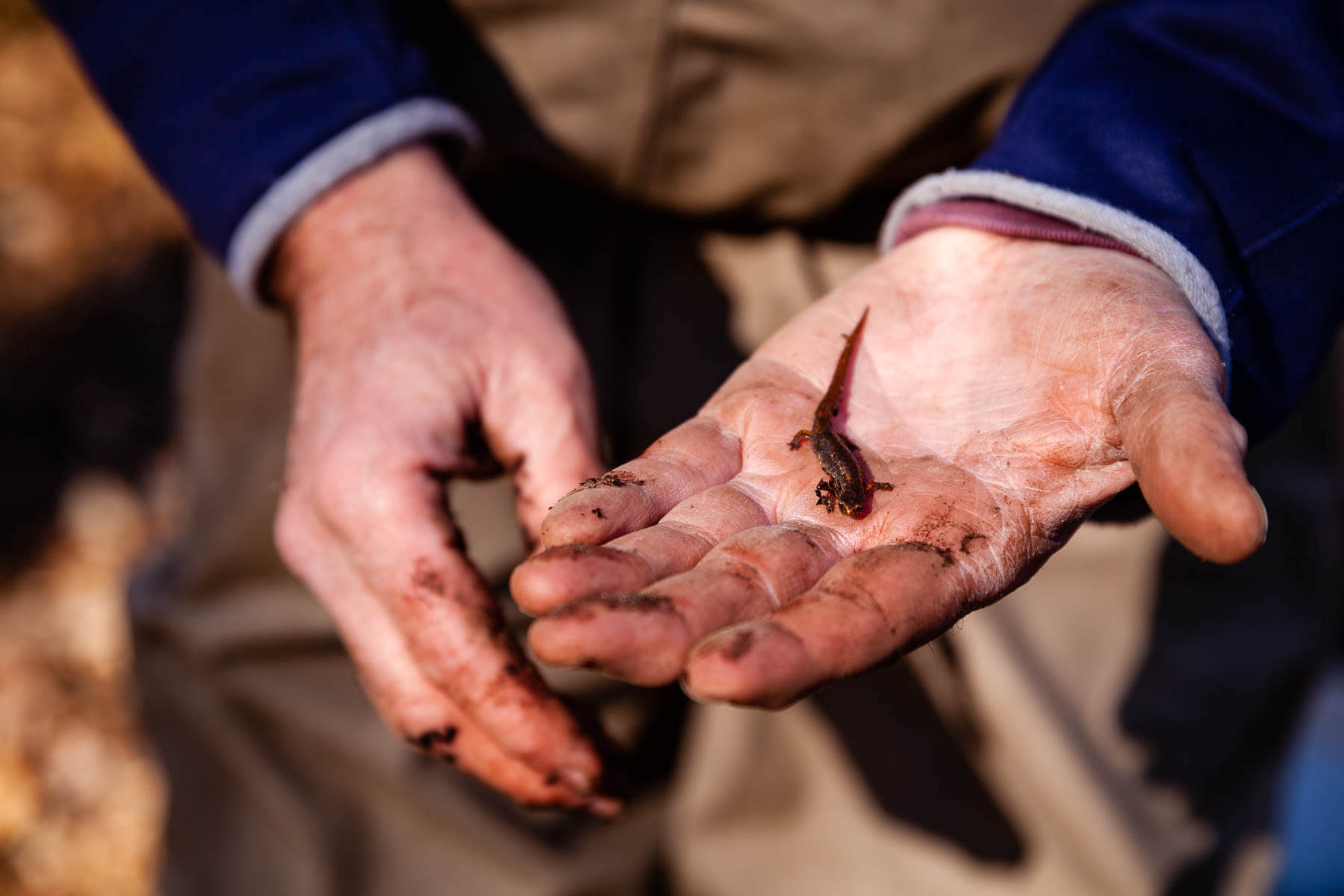Tracking the elusive tiger salamander on Maryland’s Eastern Shore

Every year, the beginning of spring is marked by the melting of snow and the start of seasonal rains. In forests, this rainwater fills low basins to create an essential seasonal habitat known as vernal pools. When the woods still look dull with dormancy, these pools are teeming with tadpoles, fairy shrimp, salamander nymphs and other early-stage invertebrates reptiles and amphibians.
On Maryland’s Eastern Shore, Scott Smith, a wildlife diversity ecologist for the Maryland Department of Natural Resources (DNR), is responsible for researching many of these creatures, including the endangered tiger salamander. Tiger salamanders are “mole salamanders”, in that they spend most of their lives below ground, but once a year they appear en masse when they emerge to find a vernal pool to breed in. Wildlife managers survey egg masses as a proxy for population numbers. The salamanders themselves can be difficult to find but by tracking the egg masses, population changes can be estimated over time.
On a sunny day in February, I met Smith to explore some of these unique locations. Dressed in layers and equipped with chest waders, we headed out to look at some of the Carolina bays Smith was monitoring for tiger salamander activity. Carolina bays are oval depressions of land lined by sandy rims found throughout the Atlantic Coastal Plain. These areas tend to have more endangered plants and animals and are filled with ponds where vernal pools form.
After a short hike, we arrived at the first site. The bay was already dotted with rods from a monitoring survey completed the previous weekend. The water was crystal clear with bright green grass growing at the bottom. We began our survey of the site by standing several feet apart and moving step by step in pace with each other—looking for egg masses in the water. As we passed previously marked egg masses, I was able to examine them. The jelly-like elliptical orbs with small dark dots inside looked so fragile, and the shape reminded me of a human brain.

This first pond was fully exposed to sunlight and exempt from tree growth. While wildlife managers typically promote tree canopy, open canopy bays are the exception to the rule. In order to maintain these important wetland habitats, managers selectively remove trees. This allows more sunlight to reach the water to warm it up and prevents the trees from draining the water before the salamanders mature.
“It's been pretty amazing because when we do it, if the water chemistry is right, we get colonization the next breeding season by tiger salamanders and barking tree frogs,” Smith said.
Smith’s expertise clearly beat my newbie eyes as he spotted unmarked egg masses from several feet in the distance. Just as I began to second guess myself, we each took one side of a submerged bush.
“I found one!” I exclaimed as I marked the location of the seventh and final egg mass we found that day.
We had clearly missed the peak of that week, as DNR had marked more than 20 egg masses in that same pond the weekend before and over 100 in a nearby bay. After marking the new egg masses in the pond, we walked around the edge to look for adult salamanders, but despite looking in all the best spots we were unable to find any.
This particular pond was on a throughway for a telephone line, and a telephone pole was placed in the pond. Over a decade before, the company had done maintenance work and driven large equipment through the area. It permanently altered the landscape and ruts from the machinery tires can still be seen today. It took several years for the salamanders to return to the pond.
Still hopeful, we hiked back to the car and headed to our next location. Smith referred to this location as the “hidden bay” because DNR did not know about it until a community member posted a picture of a tiger salamander online. Smith reached out to the individual explaining that he works to conserve tiger salamander habitat and asked them to share the location. Once he had the location, his team looked on satellite and realized that it had a wide-open pond.

Navigating our way through the woods with just a tablet marking the location, we eventually found the “hidden bay.” Though, we missed the peak daylight hours, we hoped we would be able to see through the water to spot egg masses.
This pond was clearly different from the first, surrounded by trees and with decades, if not centuries worth, of decaying leaves filling the bottom of the pond. As we entered the water the layers of leaves and mud gave way under our weight and bubbles of sulfur dioxide rose to the surface. As the smell of the sulfur filled the air around us, Smith joked that we might be the first humans to have ever walked in this path.
It was difficult to see through the water, and the leaves hid branches that could easily make us trip and fall into the pond. The rotting material consumes oxygen and Smith believed the pond didn’t have enough oxygen for tiger salamanders, but it clearly wasn’t an issue for the large tadpoles that wiggled away from us as we moved through the water.
Just as we were giving up, I noticed movement near a fallen tree.
I approached the scene, but the mud from my footstep had clouded the dark water and made it impossible to see what the movement was from. Was it a tiger salamander egg mass? Was it a salamander or a tadpole? I guess some things in the hidden bay might just have to stay hidden.
We didn’t find any egg masses in the bay but we searched around the edges for salamanders. We didn’t have any luck finding tigers, but we did find a tiny four-toed salamander. Even if it is not a location for tiger salamanders, it was clearly still a spot for other amphibian activity.

Our third and final location was a spot that had been specifically created for tiger salamanders and was normally a hot spot for activity. This year, though, the pond was mysteriously muddy, indicating that it had been disturbed. It could have been from a natural cause like deer running through the shallow water or from duck hunters walking through, even though it is not located on game lands.
However, Smith’s worst fear is that pet trade poachers found the breeding site. Salamanders already face threats from development, deforestation and climate change. The growing illegal pet trade is one of the most difficult challenges for wildlife managers to control. Poachers find breeding locations and take the egg masses out of the ponds to raise and sell as pets. Smith and his team will be installing hidden trail cameras around this pond and some of the others so they can see exactly what is happening at each location.
Smith’s appreciation for the work was contagious. He valued the role of every creature in the ecosystem, from the red-tailed hawk flying above to the leeches swimming in the ponds.
We didn’t see any tiger salamanders, but we did see evidence that their population will continue to grow despite the current challenges. Thanks to managers like Smith and his team, we know that the often unseen but all too important amphibians on the Eastern Shore will be protected.
To protect amphibians in your neighborhood, be sure to be on the lookout for amphibian crossings in early spring when you’re driving at night. Join community science efforts like Frog Watch USA. Go out and enjoy the annual natural phenomenon but stay on trails to avoid disturbing this fragile habitat. If you’re lucky enough to spot something, feel free to share it with wildlife managers but keep the location off of social media.

Comments
There are no comments.
Thank you!
Your comment has been received. Before it can be published, the comment will be reviewed by our team to ensure it adheres with our rules of engagement.
Back to recent stories